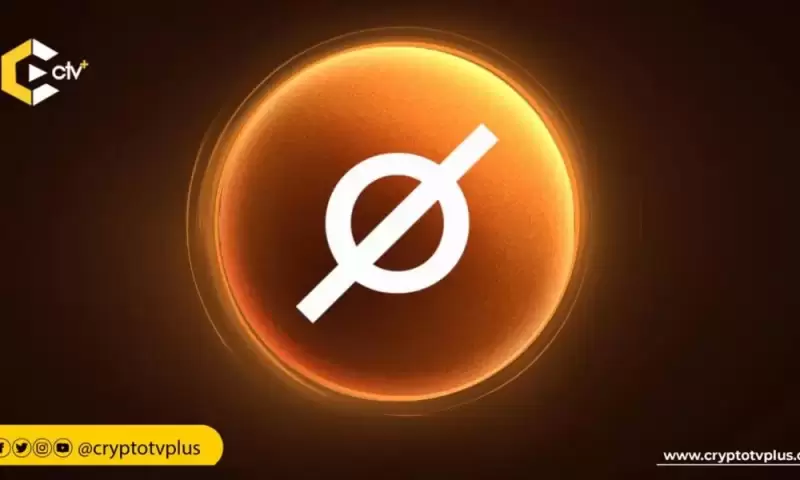 |
|
 |
|
 |
|
 |
|
 |
|
 |
|
 |
|
 |
|
 |
|
 |
|
 |
|
 |
|
 |
|
 |
|
 |
|
Cryptocurrency News Articles
Unveiling the Runes Protocol: A Deep Dive into its Architecture, Security, and Future-Proofing
Mar 27, 2024 at 08:14 pm
The Runes Protocol, a layered architecture for managing unstructured data on blockchain, ensures data integrity through updaters, inscriptions, and cenotaphs. Updaters manage state index updates, while inscriptions encapsulate messages in runestones. Cenotaphs, unique to the protocol, safeguard the system by marking malformed runestones as invalid, preventing misuse and preserving data integrity. This layered approach guarantees clear and efficient blockchain transaction processing.

The Runes Protocol: A Comprehensive Exploration into its Layered Architecture, Data Integrity, and Future-Proofing
The Runes Protocol, an innovative blockchain technology, has emerged as a game-changer in the realm of data management and security. This intricate protocol, structured in layers, offers a groundbreaking approach to handling and interpreting unstructured data with efficiency and precision. In this comprehensive guide, we delve into the intricate workings of the Runes Protocol, uncovering the mechanisms that ensure data integrity and security through its ingenious system of updaters, inscriptions, and the novel concept of cenotaphs.
Understanding the Layered Architecture of the Runes Protocol
At the core of the Runes Protocol lies its sophisticated layered architecture. Each layer is meticulously designed to parse data from its preceding layer, passing information seamlessly up the chain. This meticulously crafted structure ensures clarity and efficiency in processing blockchain transactions, particularly during the mining of new blocks.
The Process of Updating and Inscription
As a new block emerges, the Runes Protocol swiftly initiates an intricate process. The ordinal index instantiates an Updater to meticulously refresh the state index, handling outputs and sat range mappings with precision. However, for more nuanced updates, such as those involving inscriptions and runes, the protocol delegates these tasks to specialized updaters, guaranteeing that each segment of data is managed with accuracy and security.
From Transactions to Runestones
The Runes Protocol encapsulates its messages within runestones, meticulously extracted from transaction OP_RETURN outputs. The process involves identifying the protocol identifier and parsing byte vectors into meaningful data sequences. This data serves as the foundation for untyped messages, which subsequently lead to the creation of typed runestones, carrying specific instructions and values.
Cenotaphs: The Rune Protocol's Safety Mechanism
A distinctive feature of the Runes Protocol is the concept of cenotaphs, acting as safety valves for the system. These cenotaphs effectively prevent malformed runestones from compromising the protocol's integrity. By flagging these faulty messages as cenotaphs, the protocol renders any associated runes null and void, preventing misuse and maintaining the security of the system.
The Importance of Cenotaphs and Future-Proofing
Cenotaphs play a pivotal role in paving the way for future updates to the Runes Protocol without jeopardizing existing systems. They ensure that any upgrades do not deceive unupgraded nodes about their rune holdings, maintaining transparency and trust within the blockchain network. This approach underscores the protocol's dedication to adaptability and long-term reliability.
Integration and Implementation Advice
Given its sophisticated and nuanced nature, attempting to integrate or rewrite the Runes Protocol is strongly discouraged. Instead, those seeking to incorporate runes into their systems are advised to utilize the original 'ord' software for validating transactions. This ensures adherence to the intricate mechanisms of the protocol.
Conclusion and Future Outlook
As the Runes Protocol nears completion, its introduction promises to revolutionize blockchain technology's security and efficiency. With its sophisticated layered architecture and the innovative use of cenotaphs, the protocol is poised to establish new standards in blockchain operations. Safeguarding data integrity while ensuring adaptability for future enhancements, the Runes Protocol represents a significant advancement in the field of blockchain technology.
Disclaimer:info@kdj.com
The information provided is not trading advice. kdj.com does not assume any responsibility for any investments made based on the information provided in this article. Cryptocurrencies are highly volatile and it is highly recommended that you invest with caution after thorough research!
If you believe that the content used on this website infringes your copyright, please contact us immediately (info@kdj.com) and we will delete it promptly.
-

-

-

-

-

-

-

-

- Publicly Traded Bitcoin Miners Pop Friday—But YTD Losses Still Cut Deep
- Apr 12, 2025 at 08:45 am
- Financial markets shimmered with cautious optimism as U.S. equities closed positively Friday, with the Nasdaq Composite rising 2.06% and the digital asset sector vaulting 3.72% to a $2.63 trillion valuation.
-





























































